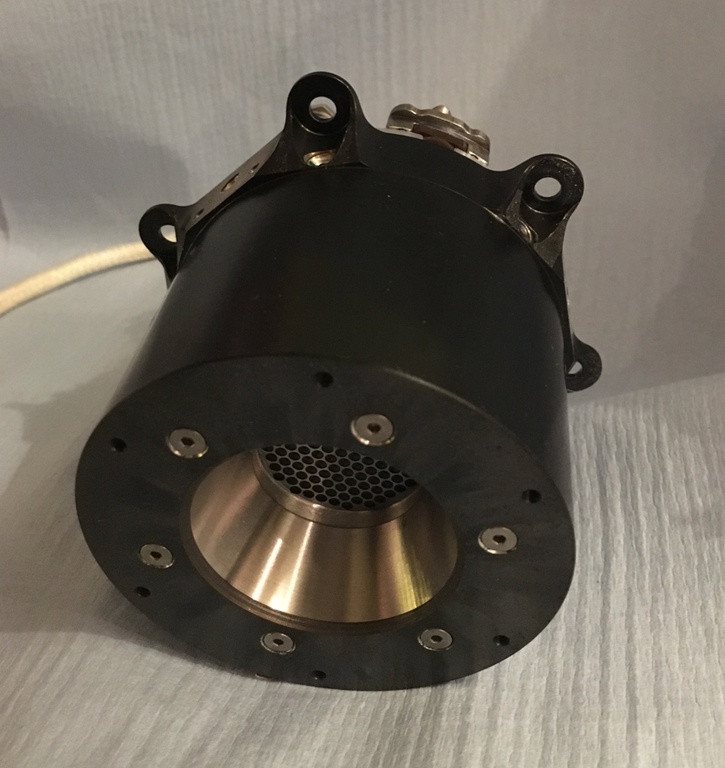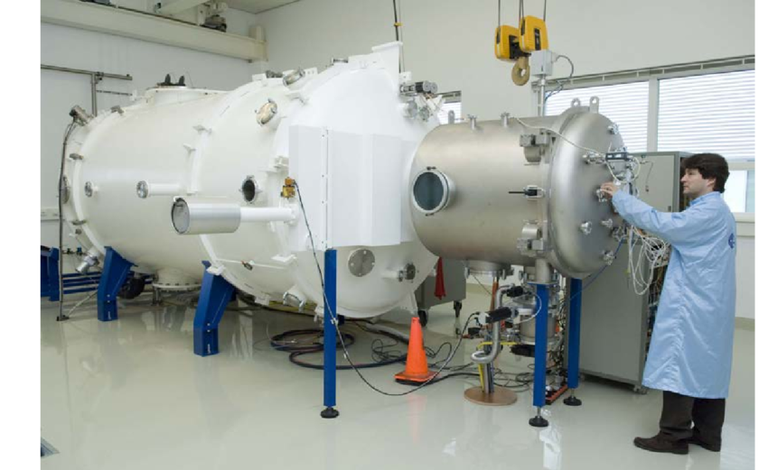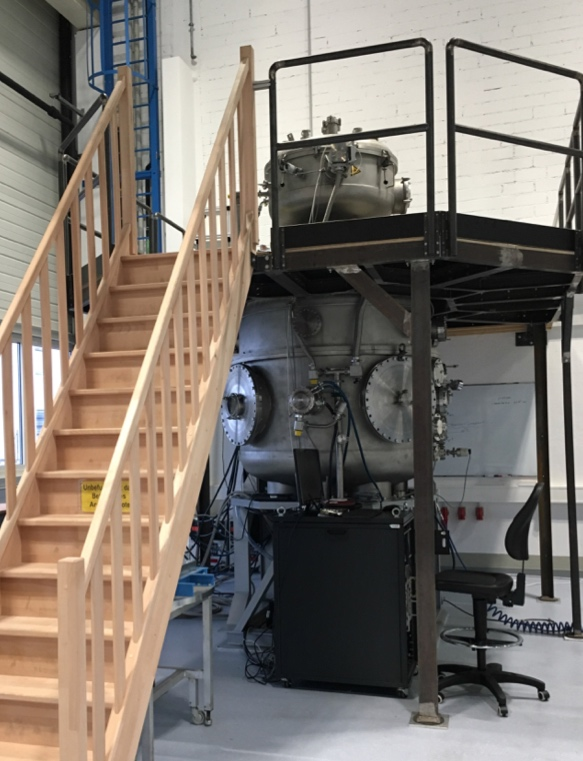After exhausting but exciting hundreds of hours of lifetime tests, and follow-up parameters validation, we are ready to unveil the groundbreaking results of our Variable Isp Radio Frequency Mini Ion Engine test campaign [1]! This endeavor was made possible through a collaborative effort with the TransMIT GmbH, marking a pivotal moment in propulsion innovation.
Engineered by TransMIT GmbH according to the Propulsion Requirements of Next Generation Gravity Missions program, Radio Frequency Mini Ion Engine RIT3.5 embodies the culmination of years of research and development. The Specific Impulse and the Thrust of a real thruster with classic Grid System are normally interdependent and no practical variation of the Specific Impulse can be proposed for fixed thrust levels without drop in efficiency or lifetime. Departing from the conventional constraints, new techniques were for independent thrust and specific impulse control.

At the heart of this innovation lies the concept proposed by D. Fearn [2], leveraging an additional electrode within the Ion Optics System (IOS) to decouple extraction and acceleration. Such method, allow to overcome the limitations of classic IOS and to accelerate the extracted ions to higher velocities, and elevate both thrust and specific impulse levels to the new heights.
Experimental program was divided in two sequences:
- Characterisation tests included performance mapping of the Variable Isp µNRIT-3.5 against classic version of this thruster. Performances were tested over the operational envelope of the thruster in the range of NGGM mission thrusts in the extended range of mass flows and high voltages and not only for the pre-set operation points considered to be optimal for the mission. The Characterisation test campaign was in its turn divided to a larger campaign covering all the tests using laboratory Power Supply and Control Units, that was done in our facility at our facility at Ludwig Bölkow Campus; and a smaller campaign covering coupling with the Engineering Model Power Processing Unit in comparison to laboratory PSCU, that we have performed in collaboration with ESA at ESTEC EPL, Nordwijk[3].
- Endurance test included 500 h of direct firing of the thruster with three erosion measurements with the help of microscopy before test kick off, after 300h of firing and at the end of the test.

At Ludwig Bölkow Campus test was set-up inside of R2D2 vacuum test facility. This facility comprises two volumes – main chamber and hatch - with total volume 4.5 m3 and total pumping capacity of 24 000 l/s.

Tests have confirmed the Isp variability with the help of four-grid IOS that allows expand thruster performances:
- With power consumption hovering between 75 and 100 Watts at a thrust level of 2 mN, the thruster demonstrated an admirable power-to-thrust ratio below 40W/mN at bus level. Specific impulse variations ranging from 3000 s to 5000 s underscore the versatility and efficiency of our propulsion paradigm.
- Operating at a thrust level of 50 microN, and a power consumption between 6 and 25 Watts, the specific impulse variations were achieved between 100 s and 500 s.
Our extended firing test, accumulating a total impulse of 3.6 kNs, showcased the resilience of our acceleration grid, matching the erosion rates of classic IOS under nominal conditions.
As we stand on the cusp of a new era in space exploration, the Variable Isp Radio Frequency Mini Ion Engine stands as a testament to innovation and possibility. Join us as we continue to push the boundaries of propulsion technology, unlocking the mysteries of the cosmos one thrust at a time.
Literaturverzeichnis
|
[1] |
M. Smirnova, A. Mingo, J. Schein, P. Smirnov, E. Bosch und L. Massotti, „Test Campaign on the novel Variable Isp Radio Frequency Mini Ion Engine,“ in 36th International Electric Propulsion Conference, Vienna, Austria, 2019. |
|
[2] |
D. G. Fearn, „The application of gridded ion thrusters to high thrust, high specific impulse nuclear-electric missions.,“ 55th International Astronautical Congress, 2004. |
|
[3] |
J. Gonzalez del Amo, G. Saccoccia und P.-E. Frigot, „ESA Propulsion Lab at ESTEC,“ in 31st International Electric Propulsion Conference, Ann Arbor, Michigan, USA, 2009. |